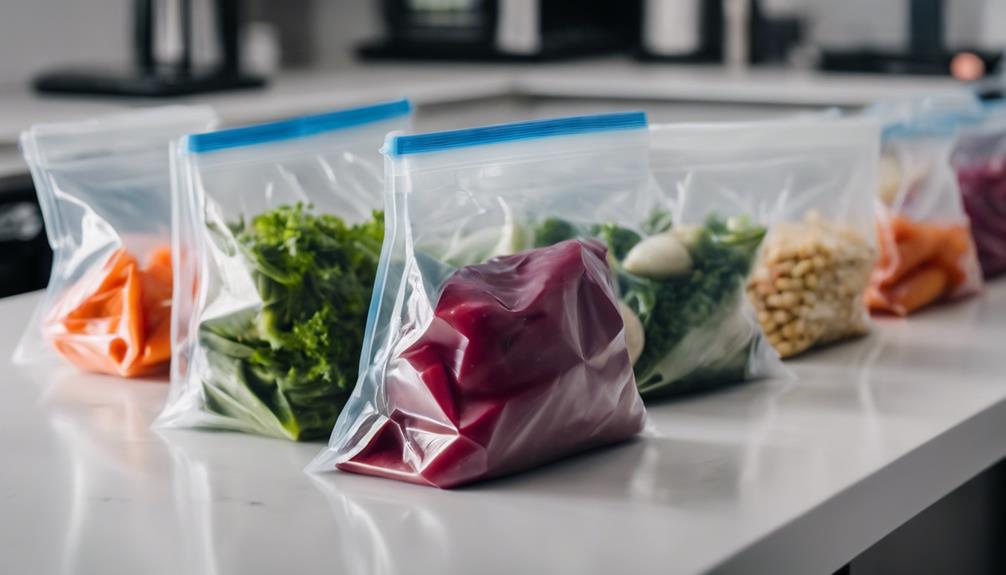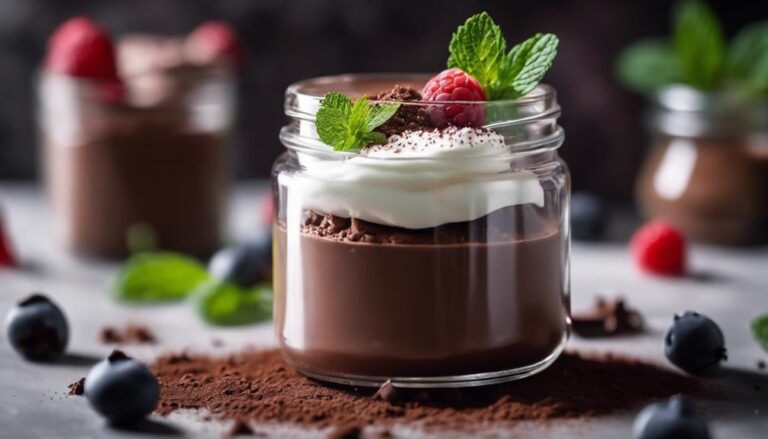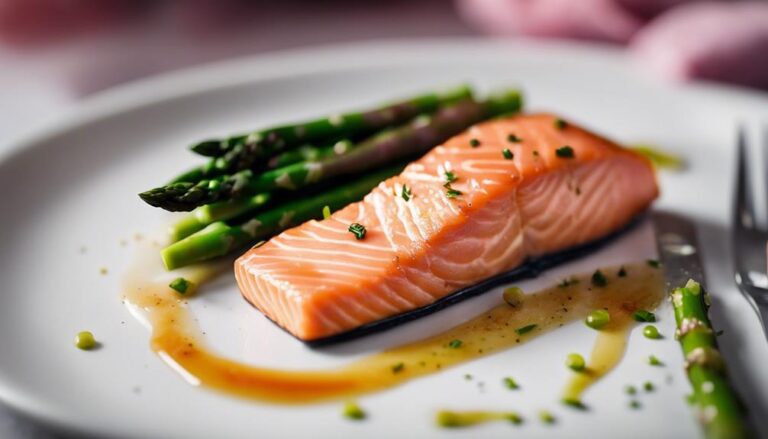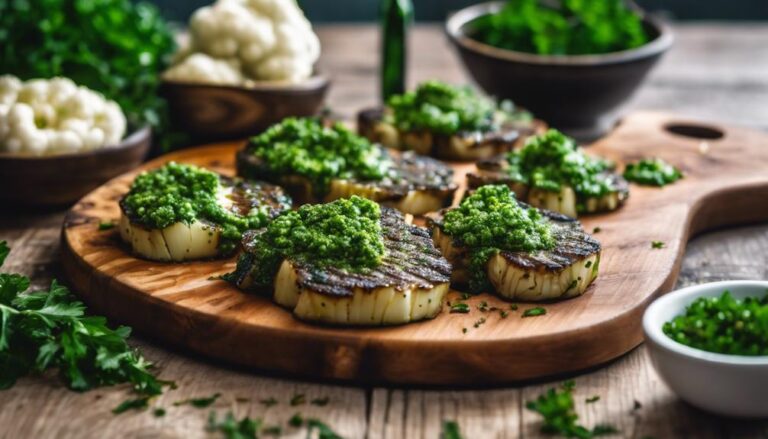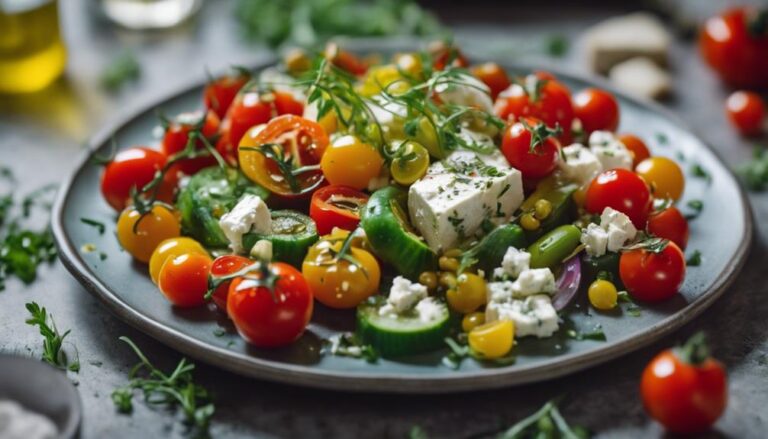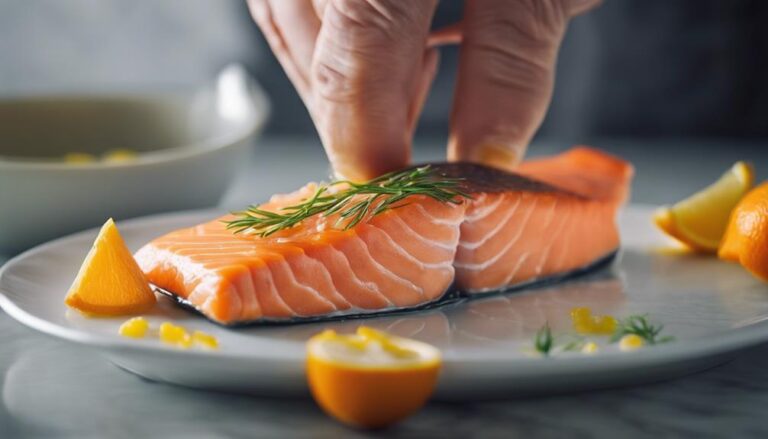Sous Vide Veggie Packs: Grab, Heat, and Eat
Discover the convenience of sous vide veggie packs – grab, heat, and eat for a hassle-free meal. These packs guarantee perfectly cooked, flavorful vegetables every time. With vacuum-sealed packaging, freshness and nutrients are preserved for your enjoyment. Easily increase your vegetable intake with various tasty combinations. Experience nutritious meals without the fuss.
What You Will Learn Here
- Convenient pre-packaged veggie packs for quick meals
- Simply grab from freezer, heat, and enjoy
- Retains nutrients, freshness, and flavor through sous vide cooking
- Offers variety in vegetable combinations for diverse tastes
- Easy heating instructions for effortless preparation
Sous Vide Origins
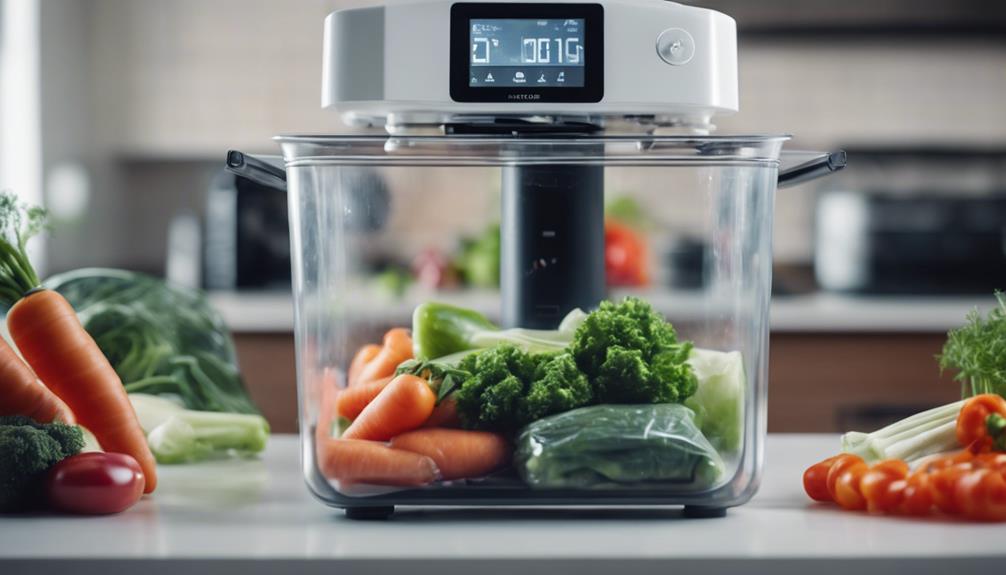
Sous vide cooking traces back to its French roots in the 1960s when it was primarily used for cooking foie gras consistently.
Over time, this method evolved to encompass a wide range of foods, including vegetables, all benefiting from the precise temperature control sous vide offers.
The technique's popularity surged in both professional and home kitchens for its ability to enhance flavors and textures through its meticulous cooking process.
Sous Vide History
Originating in France in the 1970s, sous vide cooking revolutionized the culinary world with its precise temperature control and ability to maintain food quality.
The term 'sous vide,' meaning 'under vacuum' in French, highlights the practice of vacuum-sealing food for accurate cooking. Dr. Bruno Goussault, a notable French food scientist, played a pivotal role in developing sous vide techniques.
This cooking method quickly gained popularity for its exceptional capability to preserve the texture, flavor, and nutrients of ingredients through the exact regulation of cooking temperatures.
Over time, sous vide cooking has shifted from high-end restaurants to become a versatile culinary approach embraced in households and professional kitchens worldwide.
Modern Sous Vide
With the evolution of culinary techniques, the modern interpretation of sous vide has transcended its origins in high-end dining establishments to become a widely accessible method for home cooks.
Sous vide, meaning 'under vacuum' in French, involves vacuum-sealing food for precise cooking in a water bath at controlled temperatures. This method, developed in the 1970s by French and American chefs, gained popularity for its ability to cook food evenly while retaining moisture, flavors, and nutrients.
Initially exclusive to high-end restaurants, sous vide has become more attainable for home cooks with the availability of sous vide equipment. Today, modern sous vide techniques include pre-packaged sous vide meals, where vegetables or proteins are vacuum-sealed, making it easy to heat and eat for added convenience.
Benefits of Sous Vide
The introduction of sous vide cooking techniques revolutionized the culinary world by providing precise temperature control for achieving consistent and flavorful dishes. Sous vide, originating in France in the 1970s, involves cooking food in vacuum-sealed bags at controlled temperatures for extended periods.
This method guarantees that the food is evenly cooked, retains its natural flavors, and reaches the desired level of doneness. By controlling the temperature and time precisely, sous vide cooking eliminates the risk of overcooking or undercooking, resulting in perfect outcomes every time.
The use of a vacuum sealer further enhances the process by sealing in the flavors and juices of the ingredients. This technology hasn't only benefited professional kitchens but has also made its way into home kitchens, allowing for convenient and precise meal preparation.
Carrot Preparation Techniques

To prepare carrots for sous vide cooking, begin by selecting fresh, firm carrots without any signs of spoilage. Follow these steps to guarantee your carrots are ready for a delicious sous vide dish:
- Peel and trim the carrots: Start by peeling the carrots to remove the outer skin, then trim off the tops and bottoms.
- Cut the carrots: Depending on your preference, you can slice the carrots into rounds, cut them into batons, or leave them whole if they're small.
- Vacuum seal the carrots: Place the prepared carrots in a vacuum-sealed bag, making sure they're in a single layer for even cooking. Seal the bag properly to prevent any air from getting in.
Carrot and Honey Sous Vide
When preparing your sous vide carrot and honey dish, consider exploring the POINTS section for inspiration. Recipes like Spicy Maple Glazed Carrots, Savory Carrot Medley, and Sweet Carrot Souffle can add variety to your culinary repertoire.
Experimenting with different flavor profiles and textures can elevate your sous vide cooking experience.
Spicy Maple Glazed Carrots
Infuse your carrots with a delightful blend of sweetness and spice using the sous vide method for this Spicy Maple Glazed Carrots recipe.
- Imagine the sous vide machine gently cooking the carrots to a perfect tenderness, ensuring every bite is flavorful and tender.
- Picture the maple syrup and spices enveloping the carrots, creating a harmonious balance of sweet and spicy flavors in every bite.
- Visualize the convenience of having these deliciously glazed carrots ready to eat at any time, offering a quick and tasty addition to your meals.
Enjoy the unique twist of sous vide cooking on your vegetables, delivering a burst of flavors that will elevate your dining experience.
Savory Carrot Medley Recipe
Enhance the flavors of your Dutch carrots by infusing them with hot honey, red chilies, and chili flakes in this savory Carrot Medley Recipe cooked sous vide style.
- Guaranteed Perfection: Vacuum sealing the ingredients guarantees that the flavors intensify, creating a harmonious blend with every bite.
- Exact Temperature: Cooking the carrots sous vide at 83.9°C or 183°F for 1 hour ensures a perfect balance of tenderness and crunchiness.
- Flavor Explosion: The combination of hot honey, red chilies, and chili flakes elevates the taste profile, offering a delightful kick to your taste buds.
Sweet Carrot Souffle
For a delectable twist on traditional carrot dishes, consider preparing a sweet carrot souffle infused with honey using the sous vide method. Cooking sous vide guarantees precise control over the texture and flavor of the dish, creating a tender and flavorful outcome with minimal effort.
The combination of carrots and honey offers a delightful balance of natural sweetness and rich flavor. To make this sweet carrot souffle, seal the carrot and honey mixture in a plastic bag and cook it sous vide style.
The result is a versatile side dish that pairs perfectly with a variety of main courses. Enjoy the harmonious blend of flavors and the tender, perfectly cooked carrots in this unique sous vide recipe.
Sous Vide Bag Sealing Trick
When sealing sous vide bags, make sure to use the water displacement method to eliminate excess air for a tight seal.
Pressing the bag against the container's edge helps expel any remaining air before sealing.
Remember to keep the bag opening dry to guarantee a proper seal and prevent water from entering during cooking.
Sealing Bags Effectively
To effectively seal sous vide bags, utilize the water displacement method by submerging them in water to remove air and guarantee a tight seal. When sealing zip-top bags for sous vide cooking, make sure the opening is above the water level to prevent water from getting inside. For double assurance, fold the top of the zip-top bag over twice before submerging it in water to prevent any potential leaks. Properly sealed bags are essential for maintaining a water-tight environment during sous vide cooking, ensuring precise and consistent results.
| Sealing Method | Instructions |
|---|---|
| Water Displacement | Submerge bag in water, pushing out air before sealing. |
| Zip-Top Bags | Remove excess air, seal securely ensuring no water enters. |
| Double-Sealing Zip-Top | Fold the top over twice to double-seal before submerging in water to prevent leaks. |
Maintaining Water Tightness
Guarantee maximum water tightness in your sous vide bags by employing a dual seal method for prime results.
When vacuum sealing, make sure to press the bag's opening flat to eliminate excess air and create a secure closure that prevents water from seeping in.
Be cautious not to overfill the bag, as this can lead to leaks during cooking.
Before sealing, check for any wrinkles or folds in the bag to ensure a tight seal.
Maintaining water tightness is vital to preserving the quality of your ingredients and preventing any unwanted moisture from entering the bag.
Ensuring Food Safety
For essential food safety in sous vide cooking, ensuring a tight seal on your bags is vital to prevent contamination and maintain a secure cooking environment.
One effective technique to achieve this is using the water displacement method. By submerging the food-filled bag in water, the pressure forces air out of the bag, creating a vacuum effect. This step removes excess air, preventing floating and ensuring efficient heat transfer throughout the cooking process.
Additionally, vacuum sealing your bags with a reliable vacuum sealer further enhances food safety by reducing the risk of spoilage and maintaining the quality of your sous vide dishes.
Before cooking, always check for any leaks or improper seals to avoid water ingress and potential foodborne illnesses, ensuring a successful and safe sous vide experience.
Final Thoughts
In conclusion, the convenience and nutritional value of Sous Vide Veggie Packs make them a practical choice for incorporating more vegetables into your diet. These pre-prepared meals save you time by eliminating the need for extensive meal preparation. Additionally, the sous vide cooking method guarantees that the vegetables are cooked evenly and thoroughly without the risk of high temperatures that can deplete nutrients. The vacuum-sealed packaging preserves the freshness and flavor of the vegetables, making them an ideal option for those looking for quick, on-the-go meals without compromising on taste or nutrition.
With various vegetable combinations available, Sous Vide Veggie Packs cater to different taste preferences, ensuring there's something for everyone. The provided heating instructions make preparation easy and efficient, allowing you to enjoy a healthy, nutritious meal without the hassle of cooking from scratch. Overall, incorporating Sous Vide Veggie Packs into your routine offers a convenient, delicious, and wholesome way to increase your vegetable intake effortlessly.
Frequently Asked Questions
What Is the Best Temperature for Sous Vide Vegetables?
For perfect sous vide vegetables, aim for 183-190°F. Different veggies may need slight temp tweaks. Maintaining precise temps is key to ideal texture. Sous vide techniques preserve color and nutrients, ensuring veggie tenderness.
Can You Overcook Vegetables in Sous Vide?
You can overcook vegetables in sous vide, affecting their texture. Properly monitor and adjust sous vide timing based on the vegetable type to prevent mushiness. Precise cooking control helps achieve best results, ensuring a delicious outcome every time.
What Temperature Should Vegetables Be for Hot Holding?
To guarantee vegetable tenderness and safety during hot holding, keep them at temperatures between 135-150°F (57-65°C). Employing precise hot holding techniques like sous vide ensures food safety and quality. Avoid temperatures below 135°F (57°C) to prevent foodborne illnesses.
How Are Sous Vide Items Packaged for Cooking and Storing?
When you purchase sous vide items, they're meticulously packaged using vacuum-sealing methods. This packaging guarantees freshness and even cooking by fully submerging the food. It prolongs shelf life, provides cooking instructions, and prevents cross-contamination.
Conclusion
To sum up, sous vide veggie packs provide a convenient and delicious way to enjoy perfectly cooked vegetables.
By utilizing the sous vide method, you can guarantee that your carrots are tender and full of flavor.
With the simple preparation techniques and bag sealing trick, you can easily grab, heat, and eat a nutritious meal in no time.
Incorporate sous vide veggie packs into your meal prep routine for a hassle-free and satisfying dining experience.
